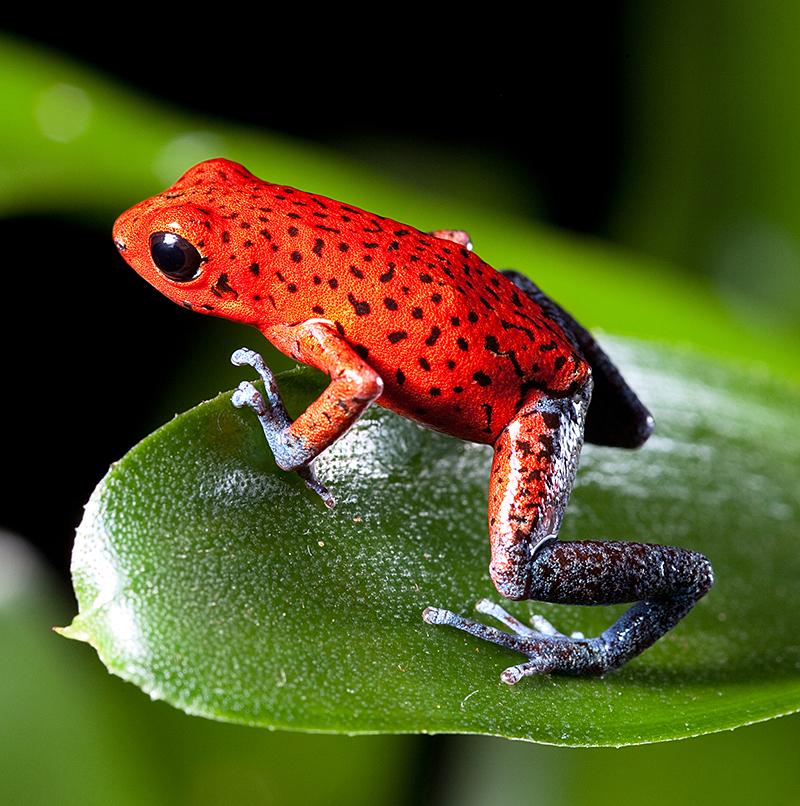Poison dart frog, also called dart-poison frog, is a small, colorful frog known for the poisonous skin of many species (kinds). There are more than 200 species of poison dart frogs. They live in Central and South America. The skin of many species has glands that produce poisonous secretions. The poison helps keep away predators (hunting animals). The frog’s name refers to the fact that native people in Colombia traditionally used certain species to poison blowgun darts for hunting.

Adult poison dart frogs range from 1/2 inch to 21/2 inches (1.3 to 6.4 centimeters) in length. Poison dart frogs may be red, orange, yellow, or blue. These bright colors warn predators that the frog is poisonous. Predators must touch the skin to be poisoned.
The most poisonous species is the golden poison dart frog of Colombia. Scientists estimate that a single adult contains enough poison to kill at least 20,000 mice or 10 adult humans. It is one of the most poisonous animals.

Unlike the majority of poisonous animals, poison dart frogs do not create the chemicals that make them poisonous. Instead, they collect these poisons from their food. Ants, mites, and termites are the main source. Other sources include beetles and millipedes.
